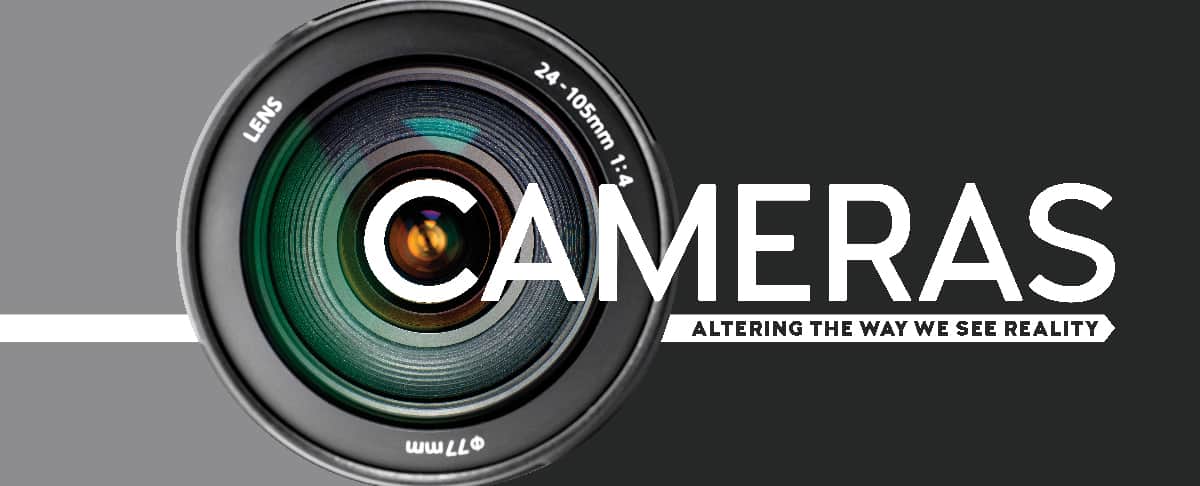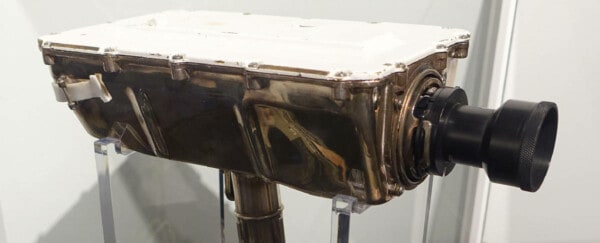Today’s cameras are indeed amazing. Time-of-flight (ToF) technology measures the round-trip time for an artificial light signal from a laser or light-emitting diode to travel between itself and the object being photographed and is used for object scanning and indoor navigation to augmented reality. How did this enduring interest in using light to produce an image with cameras begin? What is its future? The following timeline highlights key points in the evolution of camera technology. Dates are approximate, as in some cases there is not clear consensus on the precise moment a development took place.
400 BC–1600s The ancestor of cameras
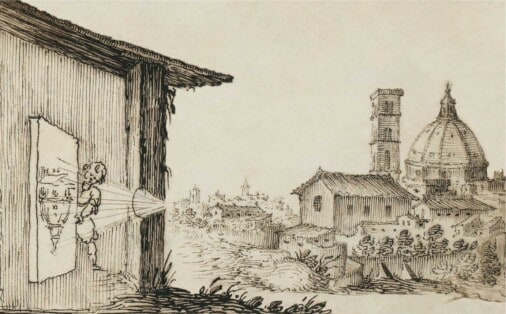
The camera obscura (“dark chamber” in Latin) was the first to produce an inverted image of an outside object that was shown through a tiny hole in an outside wall onto a whitened inside wall. By the 16th century, the camera obscura had become a box that projected an image through a small opening in one side and projected it out of another hole. That image was also upside down, and as the technology progressed, mirrors were used to project the image right-side-up. This is generally credited to an Arab scholar, Ibn Al-Haytham, also known as Alhazen, between 945 and 1040. However, even earlier references to the camera obscura are found in Chinese texts of about 400 B.C. and the writings of Aristotle.
1799 – 1816 Beginning to experiment with light
In England, Thomas Wedgwood and Sir Humphry Davy successfully developed (and published) a photographic process around 1799 and made photographs on treated leather inside a camera. Though they created what are probably the first camera photographs, they did not invent permanent photographs. French scientist Nicéphore Niépce was said to develop the first permanent photographic image by placing an engraving onto a metal plate coated in bitumen and exposing it to light. After placing the metal plate in a solvent, the image, called a sun print, appeared. Though the image gradually faded away, it is considered the first photographic image.
Sir David Brewster, a Scottish scientist most famous for his invention of the kaleidoscope in 1816, made significant contributions to stereography by establishing that a stereo photograph should have the same aperture as the human eye and that the focal lengths of a camera and viewer lenses must be equal. By 1849, he created a boxlike instrument with two decentered lenses and a hinged shutter on top to admit light. This hand-held stereoscope was later refined by Joseph Bates who added wires to hold the card on the sliding cardholder for focusing.
1835 The first paper photographs
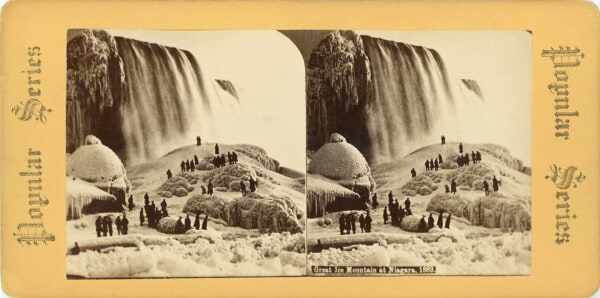
William Henry Fox Talbot was the first to put photographic images on paper, known as the calotype, an early photographic process. These were basically contact prints on light-sensitive paper, which unfortunately produced dark and spotty images. In 1840, Talbot modified and improved this process and called it the calotype. It needed a much shorter exposure time and a development process following exposure.
1838 Three-dimensional images
Using a pair of mirrors at a 45-degree angle to a user’s eyes, an image is reflected off to the side. When the eye sees a right- and left-eye view of the same subject, each eye sees only the image designed for it; the brain, however, fuses the two as a solid object. Sir Charles Wheatstone placed two mirrors at 45-degree angles to present the earliest type of stereoscope. This evolved into a photographic process.
1839 – 1850 Capturing images with photosensitive materials
Louis Daguerre invented the daguerreotype, a photographic process of fixing images on a sheet of silver-plated copper, which was then polished and coated in iodine. The surface became sensitive to light and was put in a camera and exposed for a few minutes. After being bathed in a solution of silver chloride, the image did not change if exposed to light. The Daguerreian Parlour, an early photography shop, was opened in New York by Alexander Wolcott, who patented the first camera in 1839.
Photos from a panoramic camera became possible. Since the 1840s, photographs of scenes that cover distances, such as a city skyline, could be taken only with a regular camera in a series of images when placed next to one another to create one image. Eventually, specialized panoramic cameras that had a negative long enough to capture such an image were produced using a specialized rotating lens camera.
1851 The first wet-plate negative
Scientists and photographers found more efficient ways to process photos. Using a viscous solution of collodion, an English sculptor, Frederick Scoff Archer, invented the first wet-plate negative by coating a glass with light-sensitive salts. One collodion process, the tintype, was more stable. The process was patented in 1856 by an American scientist, Hamilton Smith, who used iron instead of copper.
1871 Hand-held cameras and lightweight negative plates

By inventing lightweight gelatin negative plates for photography, Dr. Richard Leach Maddox, an English photographer and physician, gave photographers the ability to use dry plates as opposed to preparing their own emulsions in a mobile darkroom. This was the first time that cameras were small enough to hold in one’s hand.
1879 The first dry plate
Rather than having to use portable darkrooms for wet-plate photography, dry plates coated with a dried gelatin emulsion could be stored. Photographs could then be developed days or months after they were taken.
1888 – 1889 “You press the button, we do the rest.”
George Eastman, photographer and industrialist, created this advertising slogan after he invented a film that was flexible and unbreakable, as emulsions were coated on a cellulose nitrate film base and thus could be rolled. Because of Eastman, mass-produced cameras preloaded with film for 100 exposures and easily carried by hand were now available. After photos were taken, they were returned to the company so the film could be developed, prints made, and a new roll of film inserted into the camera to be returned to the customer.
1891 The first motion pictures
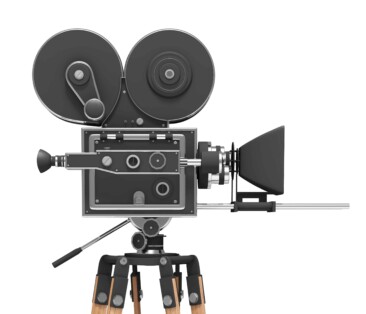
Not only was a camera invented to film and project motion pictures, but cameras also allowed many people to view them. The Edison Manufacturing Co., later known as Thomas A. Edison Inc., built the apparatus for filming and projecting motion pictures for the public. Most of the films shown were about famous people, news events, disasters, and new technology. When popularity of those films declined, comedies and dramas became more prevalent.
1907 Color photography
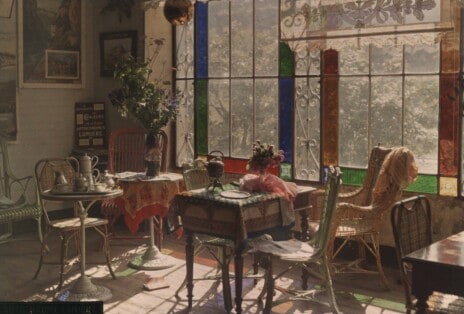
Brothers Auguste and Louis Lumière experimented for four years before creating color photos and the first color photographic plates became available to the public. Patented by the Lumière brothers in 1903, the autochrome process pioneered color photographs. It wasn’t until the 1930s that color film became commercial.
1913–1920s The first 35mm camera and 35mm film
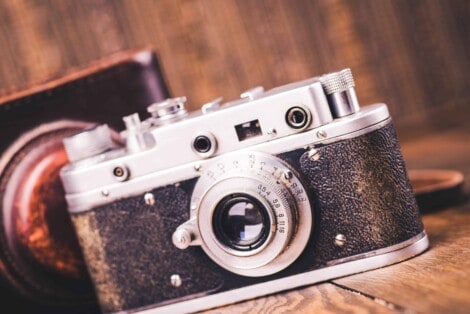
To reduce the size and weight of cameras, Oskar Barnack created a camera prototype that used 35mm film for still photos. In 1925, the Leitz camera company released the first portable 35mm camera, known as the Leica, which made photography accessible to people who could now take photos anywhere. At this time, film with a paper backing made it easy to handle in daylight. Sheet film in 4×5- and 8×10-inch sizes became common, particularly for commercial photography.
1947 Thermal imaging revolution

Thermal imaging cameras captured images to display on a screen by translating thermal energy into visible light so that a particular object or scene could be analyzed. It became thermography and shows the temperature differences of a surface. Hungarian physicist Kálmán Tihanyi invented this process, also referred to as night vision. The U.S. Military and Texas Instruments created the first infrared line scanner in 1947 to allow cameras to produce a single image. Other practical applications, such as seeing through smoke and locating people in burning buildings, were found for the cameras. Since then, thermal cameras have become practical and affordable for the consumer market. Predictions are that this market will be worth more than $10 billion by 2021 due to the many uses for them, such as night vision, building and roof inspection, law enforcement, security, medical testing and diagnosis, and more.
In 1947, Edwin Land created a one-step process — the Polaroid® camera — for developing and printing photographs in about one minute by applying the principle of diffusion transfer. This reproduces what is captured by the camera’s lens and places it onto a photosensitive surface that is both film and photo. Polaroid instant cameras were used in scientific labs as experiments or medical tests.
1950s Electronic technology applied to cameras
An electronically controlled automatic exposure meter was developed, eliminating the need to adjust shutter speeds and apertures. Automatic focusing or autofocus and automatic strobe lights became popular and transistors for electronic control circuits were replaced, which furthered the miniaturization of cameras.
1961–1980s Digital cameras
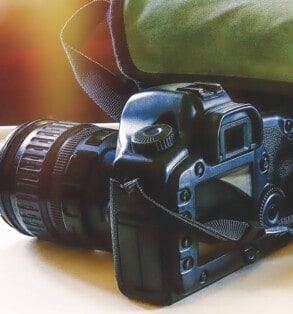
The digital camera began with Eugene F. Lally at the Jet Propulsion Laboratory, who wanted to help astronauts take pictures of the planets and stars while traveling in space.
In 1969 the digital camera revolution began with the first charge-coupled device (CCD) at Bell Labs. The CCD converts light to an electronic signal. In 1974 Gareth Lloyd, a supervisor at Kodak, asked electrical engineer Steven Sasson if he could create a camera image sensor using a high-speed conductor. He did so with a device that converted an image into an electronic signal and then digitized the signal and stored it into memory. Building upon Sasson’s invention, Kodak released its own digital single lens camera in 1991 with a 1.3 megapixel sensor and external storage unit with a capacity of storing 200 MB. At a cost of $13,000, the camera wasn’t a commercial success; however, it was a great incentive to digital photography beginning in the 1980s, eventually leading to compact microscope cameras, camera cell phones, and compact digital cameras. Digital cameras capture an image and record it in semiconductor memory. Digital single-lens reflex (DSLR) cameras combine the optics and the mechanisms of a single-lens camera in many applications such as astrophotography and security surveillance. In addition, 3D cameras capture realistic images exactly as the human eye would by equipping a CCD camera with two lenses.
2000–2007 The birth of the camera phone

In 2000, the Sharp J-SH04 was sold only in Japan and was the only 0.11MP camera. It didn’t take long for every major phone manufacturer to equip their products with cameras. The first-generation iPhone® was released in 2007 and had only a 2MP rear camera with no front camera or video recording capabilities. Since then, smartphone cameras have become increasingly sophisticated and have significantly impacted the camera and photo equipment industry.
2020 and into the future

The evolution of cameras will obviously continue with increased abilities as technology advances. Below is just a glimpse of what will be available:
• No shutter button is a camera built into a person’s glasses or other commonly used item.
• An ultra-compact camera measuring only 1 inch or less in thickness.
• Cameras that will add the sense of smell to photography.
• Unlimited battery power will provide the ability to charge one’s camera automatically as they’re using it.
• Dot sight cameras will help track far-off subjects.
• Light field recording will allow photographers to take a photo and determine which portion of the photo they would want to specifically focus on.
• No light required is on its way to reality with cameras that can take photos in the dark.
• Auto photo tagging options will allow you to upload your photos to your social networking accounts through smartphone and laptops.
• Time of flight (ToF) cameras judge depth and distance by using the speed of light to measure distance and effectively count the amount of time for a reflected beam of light to return to the camera sensor.
• Live focus video allows you to blur out the background while you are taking the video or to easily swap the foreground and background focus with a tap of the finger.
From Experiment to Part of Daily Life
With our smartphones, photographs are now a part of daily life, but it wasn’t until the 1840s that photographs became more than an experiment. Until then, cameras were more often philosophical toys. “Photography was one of those technologies that came out of the Romantic period in science and art,” said Douglas R. Nickel, Ph.D., Andrea V. Rosenthal Professor of Modern Art, History of Photography, and American Art, department of the history of art and architecture, Brown University. “At the beginning of the 19th century, scientists and inventors were consumed with harnessing the powers of nature to benefit humankind.”
Transforming matter into energy was a Romantic preoccupation. Natural philosophers noted how, when coal was burned, its mass was converted to heat, which, inside an engine, changed water into steam and steam into locomotion. “To such experimenters, photography was understood as a process that did something analogous with the forces of nature; it took something ethereal, the light energy of the sun and, via a camera and chemistry, turned it into something material — a picture,” Dr. Nickel said. “Experimenters had long known that certain natural substances, like silver salts and chlorophyll, changed color with exposure to light. They had been familiar with the principle of the camera obscura for centuries. Photography arrived when speculative tinkering brought together these two bodies of knowledge — optical and chemical.” That tinkering happened between 1790 and January 1839, when the viability of permanent photographs was announced to the public.
The notion of self-acting substances tracing a light-picture inside a black box seemed fantastic. As Dr. Nickel notes, since time immemorial, pictures were made with the human hand and eye directing a pencil or brush. But now the miraculous workings of nature seemed to substitute for the slow and fallible hand. For the first time in history, a picture presented more information than its human maker endeavored to put into it.
Our fascination with cameras remains tied to such capacities. Though designed to make images that approximate human vision, cameras give us results that aren’t at all like what we see. Cameras excerpt a small rectangular segment out of our unbounded visual field, translate our three-dimensional world into two, and isolate a moment of time from what we normally perceive as its continual flow. High-speed photography can show motion as we never see it; the X-ray shows solid objects beneath the surfaces perceived with the naked eye. Even ordinary snapshots amount to a time machine, allowing us the seeming ability to re-experience a past moment.
According to Dr. Nickel, camera technology alters the way we understand reality. Social media and photographic imagery continue to reshape human consciousness. “Photography inaugurated an age where most of what we know about the universe comes from images, not firsthand encounter,” he reflected. “I’ll never walk on the moon or witness the inside of a tornado, but photography allows me to know something about those experiences. The digital revolution represents a new magnitude of availability of photographic surrogates for experience and new ways of sorting and sharing them.”
Acknowledgment: Thanks to Douglas R. Nickel, Ph.D., the Andrea V. Rosenthal Professor of Modern Art, History of Photography, and American Art, department of the history of art and architecture, Brown University, for sharing insights on the history of photography.


